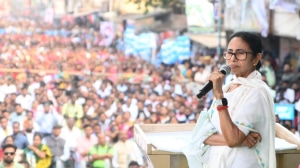City airport to be hived off
New Delhi, Nov 8: The ministry of civil aviation has drawn up plans to hive off the Delhi and Mumbai airports as separate companies that wi...

New Delhi, Nov 8: The ministry of civil aviation has drawn up plans to hive off the Delhi and Mumbai airports as separate companies that will enter into joint ventures with governments of other countries to upgrade, modernise and run the airports as international hubs.
The Delhi Airport Corporation and Mumbai Airport Corporation will function as AAI subsidiaries and will enter any tie-ups or joint ventures required for the running of the airports.
Ministry sources said the airport infrastructure policy announced on Friday provided that where the investments were too large for companies to handle, inter-government agreements could be permitted.
The ministry has prepared a proposal for the two airports which will be taken to cabinet for approval. The ministry has estimated that for constructing a second airport at Mumbai an investment of Rs 16,000 crore would be required, while for upgrading and expanding the Delhi airport an investment of Rs 2000 crore would be required. The two airports account for 52.1 per cent of the passenger and cargo traffic in the country.
The UK has expressed an interest in developing the Mumbai and Delhi airports under an inter-government agreement, with the UK government and the Airports Authority holding equity stakes in the project.
The specifics of the joint venture are yet to be worked out, but the government is keen clinching this deal with the UK. This agreement, it is expected, will speed up the development of the two most important Indian airports. If the general framework of the new policy is followed, then it might take a few years for the project to materialise, ministry sources said.The ministry had kept the proposal pending in the absence of an airport infrastructure policy.
The foreign government will select a consortium of companies in consultation with the Indian government to actually execute the project, with a public sector company of that country leading the chosen group.
The ministry proposal has envisaged a 50:50 revenue sharing between the AAI subsidairy and the foreign partner, but ther e has been some resistance to this from the AAI which gets most of its revenue from the Delhi and Mumbai airports.
The inter-government approach was initially mooted for greenfield airport projects like the Devanahalli project near Bangalore, but was subsequently extended to existing airports as well to speed up the development.
Ministry officials acknowledged that the project would be easier in Delhi because it involved an expansion of the existing airport. In t he case of Mumbai, the existing international airport and the proposed second airport would have to be combined to form a single subsidiary.
The government’s proposal had initially met with some resistance from the AAI which felt that its two best revemue earners would be taken away from the. However, under this arrangement the government is likely to offer the assets of the airports as its stake and the land as the state government’s stake. The proposal also provides for a transfer of the assets if necessary after the capital investments in the development of infrastructure is recovered fully. The AAI, in its response, had felt that the government could adopt other strategies for private participation. The authority has also estimated that by raising money fro financial institutions on a debt-equity ratio of 1.5:1 or 2:1 after a revaluation of its assets the AAI can provide for the funds requirement for at least 10-15 years of airport development.



- 01
- 02
- 03
- 04
- 05




























